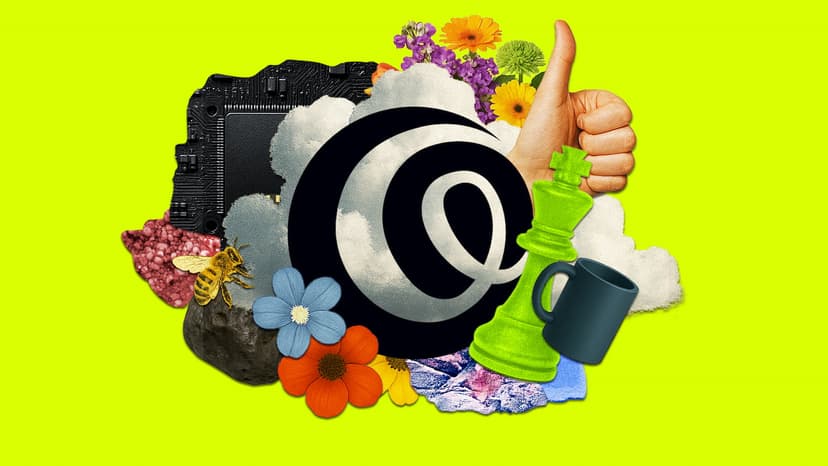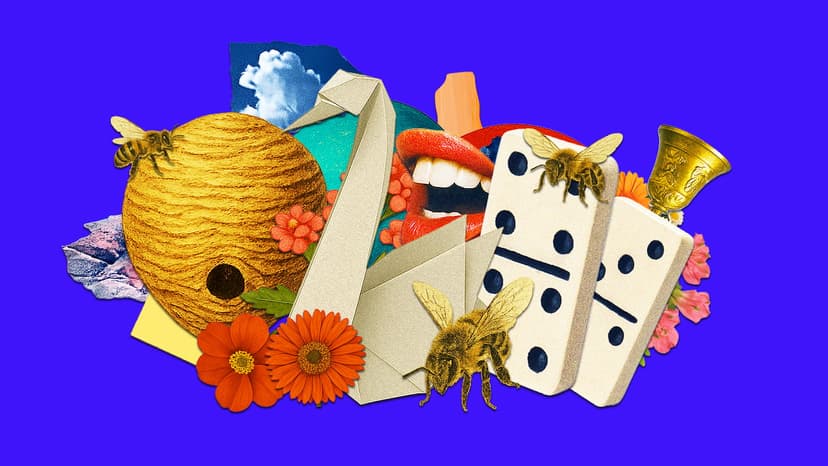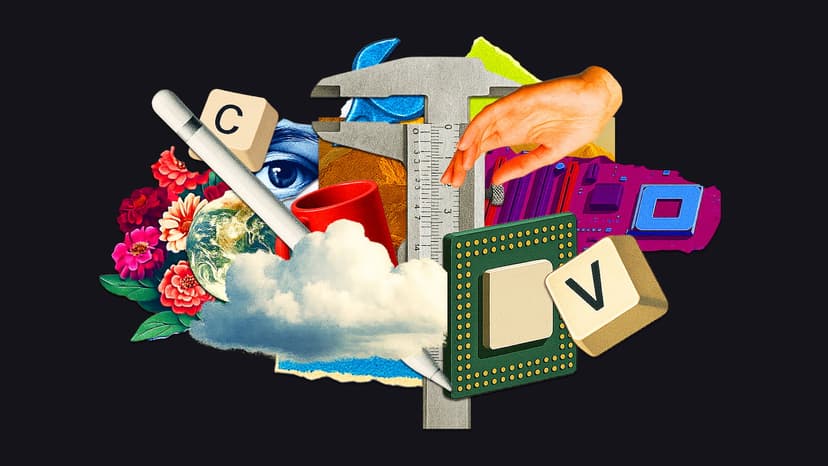Alchemy looked like science. It had symbols, elaborate rituals, dense charts, and the promise of rich rewards if practiced correctly. But alchemy's results were unreliable (at best). Its theories were rooted in mysticism rather than rigor.
Still, contrary to popular belief, not all alchemists were frauds. Many were serious thinkers. Some were even brilliant. From alchemy emerged chemistry and the practices that would define modern science: repeatable experiments, testable hypotheses, verifiable evidence.
That's where marketing is today. We have personas, funnels, MQLs, and sprawling tech stacks. It all looks rigorous. It appears systematic. The formulas comfort executives with the illusion of progress. But as the customer journey has evolved at lightning speed, the old methods are really a kind of pseudo-science: elaborate routines that rarely produce consistent, reliable business outcomes.
Customer science is the break point, the punctuated equilibrium in a time of rapid change. It's where marketing catches up to reality and replaces ritual with method, and mystique with evidence. It doesn't conjure intent from attributes; it reads intent in real signals. It doesn't pretend journeys are linear; it embraces chaos and designs for it. It doesn't chase clicks; it proves progress.
Consider the stakes: Gartner's 2024 CMO Survey revealed that marketing budgets have shrunk to 7.7% of company revenue, a sobering reminder that every dollar must earn its place in the decision stack.
Alchemy gave way to chemistry because an increasingly complex world needed clarity. Traditional marketing must give way to customer science for the same reason.
We know the pattern: big change, new discipline. Mass production created operations management. The internet explosion created data and analytics. Now? AI and unpredictable customer behavior are creating customer science — because winging it isn't a strategy anymore.Rebecca Hill, Executive Director, Journey Strategy, Pretzl
Out with the old.
Journeys drawn in boardrooms.
We sketch elaborate funnels on whiteboards, pretending buyers move neatly from awareness to consideration to decision. But in practice, buying groups start, stop, stall, and loop. They bring in new stakeholders midstream. They disappear for months and then resurface. The boardroom map is a fiction.
Personas that try too hard.
When personas become the final word rather than the first step, they reduce complex human beings to flat archetypes. No one wakes up thinking, "I am a CIO. I will do what CIOs do." Customer science uses personas as a starting point that quickly give way to actual accounts, specific stakeholders, real buying group dynamics, and individual signals that reveal what people actually do.
Metrics that celebrate motion, not progress.
Clicks, impressions, MQLs. The dashboards light up, but the business doesn't move. These are activity metrics, vanity numbers that make us feel effective, while revenue tells another story.
Funnels that pretend chaos can be tamed.
Static funnels give the illusion of control. But buyers don't respect your funnel stages. They zig when you expect them to zag. They build their own journeys in spaces you don't measure. The funnel is an artifact from an era when marketers had more control than customers.
These outdated methods served their purpose in their time. Today, they are relics that may offer comfort, but not outcomes. They provide marketing teams with a story to believe in, rather than evidence to act on.
AI demands a new discipline.
If marketing's old practices obscure reality, customer science replaces them with systems built for reality. AI not only makes it possible, it makes it essential.
As Sangeet Paul Choudary writes in his Platforms newsletter, "When answers become cheap and abundant, good questions are the new scarcity." That's the heart of customer science: not just collecting data, but asking the questions that reveal signals from noise.
With continuous signal capture, predictive modeling, and adaptive learning, AI turns what used to be guesswork into sharper questions and smarter decisions.
The Customer Science Schematic: From Data to Decisions.
| Data | Core question that drives insight | Decision |
|---|---|---|
| Behavioral telemetry (web, app, content, intent) | What patterns reveal when confidence rises or falls? | Program design: time messaging and offers to how buyers actually move. |
| Buying-group interactions (CRM, meetings, collaboration data) | Who shapes momentum and where does alignment break down? | Account strategy: enable champions, address blockers, map real decision paths. |
| Market and context signals (economic, industry, competitor) | Why is demand shifting now? | Investment timing: focus energy where external pressure creates readiness. |
| Product usage and customer health (adoption, renewals, utilization) | What do customers deem valuable through their actions not words? | Growth prioritization: fund the experiences that expand lifetime value. |
| Pricing and revenue data (quotes, win/loss, discounting) | Where is perceived value strongest and what erodes it? | Commercial design: shape price architecture and deal levers around true elasticity. |
| Service and CX telemetry (support, NPS, resolution time) | Where does friction undermine trust and what restores trust? | CX evolution: remove friction, redesign touchpoints for confidence. |
| Voice and sentiment (reviews, analyst notes, social signals) | What terms signal belief, trust, and doubt? | Narrative development: tune brand around emerging perception. |
| Experimentation and model data (A/B, MMM, causal lifts) | What actually drives outcomes and what's noise? | Performance scaling: double down on what's causally proven and cut bait on what's not. |
This is more than a new toolset. It's a new discipline. Customer science operates like evidence-based science: testable, repeatable, and grounded in what buyers actually do.
The six pillars of customer science.
Decoding real buyer intelligence.
Going beyond demographics and personas to understand what buyers and buying groups actually think, feel, and do through continuous signal capture and behavioral analysis.
Strategic journey design.
Structuring adaptive pathways that help brands show up at precisely the right moments with exactly the right messages, based on where buyers truly are rather than where funnels assume they should be.
Predictive adaptation.
Anticipating and responding to changes within buyers and their environments in real time, turning market volatility into competitive advantage through agile system design.
Objective intelligence over subjective guessing.
Using specialized data capture and AI analysis to replace marketing hunches and biased interpretations with objective, actionable directions that reflect actual buyer behavior patterns.
High-value experience creation.
Designing and delivering experiences that genuinely propel buyers through their journey toward desired outcomes, rather than pushing them through predetermined funnels.
Continuous learning systems.
Measuring real outcomes and feeding insights back into the system to constantly improve precision, relevance, and effectiveness across all touchpoints.
Obsessed with results.
When you adopt the methods of customer science, three important things happen.
Outcomes and IP compound.
Programs don't start and stop with campaigns. They aren't brittle. They learn, adapt, and scale. Each signal makes the next move smarter, creating a snowball effect that activity metrics can never show but the bottom line can.
Brand and performance unify.
No more false choice between "long-term brand" and "short-term pipeline." Customer science orchestrates both in a connected system, with every touchpoint building preference and moving deals forward.
Proof replaces promises.
Executives no longer have to take the experts' word for it. Customer science proves impact and strips bias from data: accelerated pipeline, higher win rates, smarter spend. No more activity for activity's sake.
This is the advantage conferred by customer science. Efficiency applied to the wrong system leads to faster failure. But efficiency applied to customer science turns buyer chaos into clarity, and clarity into growth.
Build customer science.
The last alchemists were also the first scientists in the modern sense of the word. They were pioneers who saw that new tools called for new methods and a rapidly changing world demanded a new discipline.
The same is true today. Marketing, as we know it, has reached its limits.
At the dawn of the Age of Enlightenment, a small network of thinkers called themselves the Invisible College. They met when they could and exchanged letters, testing new methods of inquiry that would eventually become the foundation of modern science. They didn't wait for permission. They built the future.
The advent of AI and adaptive technology means that the next generation of marketing isn't a vanguard experiment. Customer science is an available discipline. The tools are mature and the method is proving its mettle every day.
This isn't about joining an Invisible College of explorers. It's about joining a visible practice of professional marketers who are ready to evolve personas and abandon funnels, to treat signals as evidence, and to design adaptive systems that solve vital marketing problems in the real world.
Every discipline begins with pioneers. Customer science will be built through inquiry, examination, trial, and error. Together.
Join the exploration. Become part of the investigation and discovery.
Stop marketing. Start customer science.
Subscribe and take part in building the discipline.
More of this in your inbox
Published in:
Subscribe to our updates.
Get fresh marketing insights rooted in customer science to help you stay ahead.
Relatedcontent
Relatedcontent
Relatedcontent
Relatedcontent
Relatedcontent
Relatedcontent

Forget 'business as usual'. Meet Pretzl.
Welcome to Pretzl: a new kind of marketing partner using AI, data, and creativity to decode the messiness of real B2B buying.
The objectivity advantage: how stripping bias from decisions yields better creative, media, and comms.
Good instincts can be powerful in marketing — but they're hard to scale, blind to bias and limited by subjectivity. Customer science combines purposeful data, advanced AI, and human expertise to transform overwhelming complexity into objective clarity.
